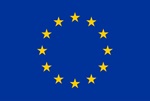SEABAT
A new technology for the waterborne transport
Project type
R&D
| Business | Period | Project Coordinator | Funding Scheme |
|---|---|---|---|
| Marine | January 2021 - December 2024 | FLANDER MAKES | H2020 |
Challenge
 The International Maritime Organization (IMO) targets 50% lower annual greenhouse gas (GHG) emissions from maritime transport by 2050 compared to 2008, and even pursues efforts towards phasing them out entirely. Electrification (retrofitted or newbuilds) is one of the solutions to reach this target. However, the technology is not yet mature and batteries for maritime use are considerably more expensive than automotive batteries.
The International Maritime Organization (IMO) targets 50% lower annual greenhouse gas (GHG) emissions from maritime transport by 2050 compared to 2008, and even pursues efforts towards phasing them out entirely. Electrification (retrofitted or newbuilds) is one of the solutions to reach this target. However, the technology is not yet mature and batteries for maritime use are considerably more expensive than automotive batteries.
The SEABAT project aims to develop a hybrid topology and implementing it in the industry, substantially reducing the cost of large waterborne transport battery systems, which is the challenge of the project. The overall objective of SEABAT is, in fact, to develop a full-electric maritime hybrid concept based on combining modular high-energy batteries and high-power batteries, novel converter concepts and production technology solutions derived from the automotive sector.
SEABAT “Solutions for largE bAtteries for waterBorne transport” has received funding from the European Union’s Horizon 2020 research and innovation programme under Grant Agreement no. 963560.
Approach
The key activities assigned to RINA include:
- definition of the regulatory requirements – Class and Statutory – from early design to life-cycle compliance
- contribution to the identification of the power load balance (battery charge / discharge requirements) in the most typical ship operational profiles
- verification of the compliance of the proposed system configuration and support to the definition of the most appropriate test program
- contribution to the development of the technology roadmap
- approval in principle of the system, based upon the simulation and tests identifying any need for amending / upgrading the regulatory framework.
Conclusion
The SEABAT project has great potential to contribute to the innovation capacity in the emerging/developing market for large battery systems, allowing the EU/EEC industry to become more competitive. In fact, the modular (and potentially standardized) solution for maritime batteries will be broadly applicable not only to waterborne transport such as ferries, offshore supply ships, fishing vessels, short range freight, inland waterway transport, but, hopefully, even beyond, extending the market even further.
